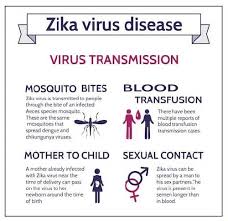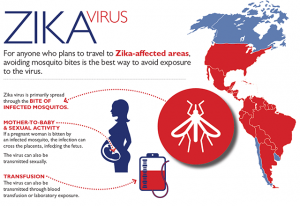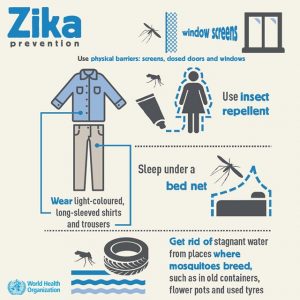
Table of Contents
Introduction:
- Zika infection sickness is brought about by an infection transmitted fundamentally by Aedes mosquitoes, which nibble during the day.
- Side effects are commonly mellow and incorporate fever, rash, conjunctivitis, muscle and joint agony, discomfort or cerebral pain. Indications commonly keep going for 2–7 days. A great many people with Zika infection contamination do not create side effects.
- Zika infection disease during pregnancy can make newborn children be brought into the world
 with microcephaly and other inherent distortions, known as inborn Zika disorder. Contamination with Zika infection is additionally connected with different inconveniences of pregnancy including preterm birth and premature delivery.
with microcephaly and other inherent distortions, known as inborn Zika disorder. Contamination with Zika infection is additionally connected with different inconveniences of pregnancy including preterm birth and premature delivery. - The expanded danger of neurologic complexities is related to Zika infection contamination in grown-ups and youngsters, including Guillain-Barré disorder, neuropathy, and myelitis
Incubation Period:
- The incubation period (the time from exposure to symptoms) of Zika infection sickness is assessed to be 3–14 days.
Symptoms and Consequences:
- Most of the individuals contaminated with Zika virus infection do not develop symptoms.
- Symptoms are generally mild and includes
- Fever
- Rash

- Conjunctivitis
- Muscle and joint agony
- Discomfort, and cerebral pain
- These symptoms generally keep going for 2–7 days.
Inconveniences/Diseases Caused by Zika Infection:
- Zika infection contamination during pregnancy is a reason for microcephaly and other inherent variations from the norm in creating baby and infant.
- Zika disease in pregnancy likewise bring about pregnancy difficulties. For example: fetal misfortune, stillbirth, and preterm birth.
- Zika virus infection during pregnancy is a cause of microcephaly and other congenital abnormalities in fetus and newborns.
- Zika infection disease is additionally a trigger of Guillain-Barré disorder, neuropathy, and myelitis, especially in grown-ups and more established youngsters.
Transmission of Zika Virus:
- Zika virus disease is primarily transmitted to people through the bite of infected Aedes mosquito.
- Aedes mosquito usually bites during the daytime, mainly during early morning and late evening.
- Zika infection is fundamentally transmitted by the nibble of a tainted mosquito from the Aedes family, for the most part Aedes aegypti, in tropical and subtropical districts.
- This similar mosquito transmits dengue, chikungunya and yellow fever.
- Zika infection is additionally transmitted from mother to baby during pregnancy, through sexual contact, transfusion of blood and blood items, and organ transplantation.


a) Transmission in from mother to child during pregnancy
- Zika infection can be transmitted from mother to baby during pregnancy, bringing about microcephaly (smaller than typical head size) and other inherent deformities in the newborn child, overall, alluded to as intrinsic Zika disorder.
- Microcephaly is brought about by fundamental irregular mental health or loss of mind tissue.
- Inborn Zika disorder incorporates different deformities including appendage contractures, high muscle tone, eye irregularities, and hearing misfortune.
- The danger of innate deformities following contamination in pregnancy stays obscure; an expected 5–15% of newborn children destined to women tainted with Zika infection during pregnancy have proof of Zika-related confusions.

b) Sexual transmission
- Zika virus can be transmitted through sex. This is of worry because of a relationship between Zika infection contamination and unfriendly pregnancy and fetal results.
c) Blood transfusion
- Zika virus can also be transmitted through transfusion of infected blood.
Diagnosis of Zika Virus:
- Diagnosis of Zika virus infection is based on symptoms and recent history of the peron.
- Laboratory testing can be mainly used confirm the presence of zika virus in the blood. However, the diagnosis may not be reliable as the virus could cross-react with other viruses such as dengue, West Nile and yellow fever.
Preventive Measures for Zika Virus:
Prevention from Mosquito Bites
- Protection against mosquito nibbles during the day and early night is a key measure to anticipate Zika infection disease.
- Use insect repellents to the exposed body parts
- Actions must be taken to the avoid mosquito nibbles among pregnant women, women of reproductive age, and little youngsters.
- Individual protection measures should be taken like wearing attire (ideally light-shaded) that covers the general body parts like hands and feet too.
- Use of physical obstructions, for example, window screens and shut entryways and windows; and applying creepy crawly repellent to skin or dress that contains DEET, IR3535 or icaridin as indicated by the item mark directions.
- Small children and pregnant women should rest under mosquito nets if dozing during the day or early night.

- Voyagers and those living in influenced regions should take similar essential safety measures portrayed above to shield themselves from mosquito chomps.
- Aedes mosquitoes breed in little accumulations of water around homes, schools, and work locales.
- Dispose and destroy mosquitoes reproducing destinations, including covering water-stockpiling compartments, expelling standing water in window boxes, and tidying up waste and utilized tires.
- Bug sprays to decrease mosquito populations.
WHO Response to Control Zika Virus:
WHO is supporting nations to control Zika virus infection by taking activities sketched out in the Zika Strategic Response Framework:
- Propelling exploration in aversion, reconnaissance, and control of Zika infection contamination and related inconveniences.
- Creating, fortifying and actualizing coordinated reconnaissance frameworks for Zika infection disease and related entanglements.
- Reinforcing the limit of research centers to test for Zika infection contamination around the world.
- Supporting worldwide endeavors to execute and screen vector control procedures planned for decreasing Aedes mosquito populaces.
- Fortifying consideration and backing of influenced kids and families influenced by confusions of Zika contamination.
Treatment of Zika Virus:
- There is no specific treatment available till date for Zika virus infection and associated diseases.
- However, people with symptoms of infection should take plenty of rest, drink more fluids and treat pain and fever with general medicines.
- In worse conditions, immediate medical treatment must be sought.
References and For More Information:
https://www.cdc.gov/zika/about/overview.html
https://www.who.int/news-room/fact-sheets/detail/zika-virus
https://www.worldvision.org/health-news-stories/zika-virus-facts
https://www.sciencemag.org/news/2016/03/zika-virus-kills-developing-brain-cells
https://www.webmd.com/a-to-z-guides/zika-virus-symptoms-prevention
https://www.who.int/features/qa/zika/en/
https://www.who.int/emergencies/zika-virus/classification-tables/en/
https://www.who.int/emergencies/diseases/zika/en/
https://www.who.int/en/news-room/fact-sheets/detail/zika-virus